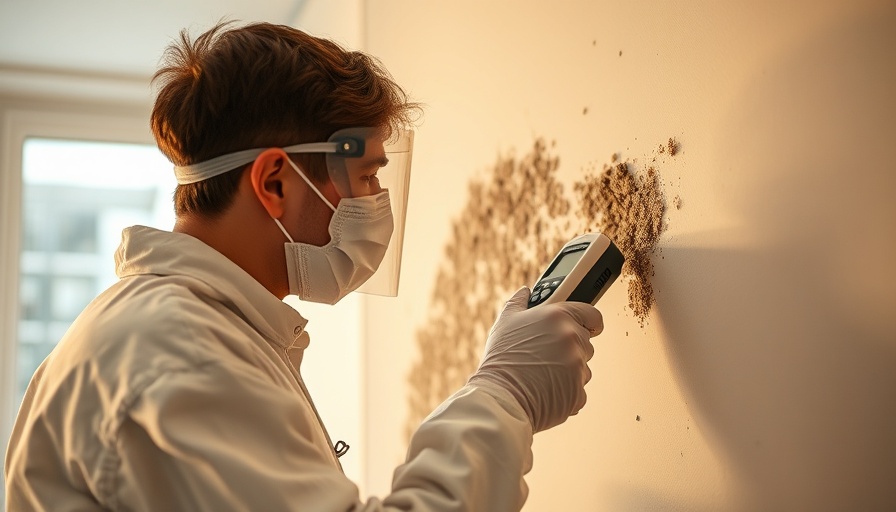
Understanding the Mold Menace: Why Its Detection is Crucial
Mold isn't just an eyesore; it's a silent intruder in many homes, often sneaking in unnoticed until it poses severe health risks and damages property. Mold thrives in damp and humid environments, reproducing through spores that easily spread throughout your living space.
Creating a mold-friendly environment requires four key elements: mold spores, suitable temperatures (between 77 and 86 degrees), organic materials, and moisture. Such conditions are often found in homes due to water leaks, condensation, or insufficient ventilation. Mold can significantly compromise indoor air quality and structural integrity if left undetected.
Common Signs of Mold You Can't Afford to Ignore
Identifying mold early is key to preventing extensive damage and health issues. Here are the top signs homeowners should look for:
1. Visible Mold Growth: The Clear Indicator
Visible mold can appear in various forms, colors, and textures. You might find patches of green, black, yellow, or even pink spots lurking in damp places such as bathrooms, under sinks, or in basements. If you spot any mold growth, act quickly to assess the scale and scope of the issue.
2. Musty Odors: A Sneaky Warning Sign
A musty smell often precedes visual signs of mold. Mold emits volatile organic compounds (VOCs) detectable even without sighting the mold directly. Pay attention whenever you notice a persistent musty odor, especially in enclosed spaces where moisture is likely to build.
3. Water Damage Indicators: A Red Flag
Check for water stains, leaks, or discoloration on walls and ceilings as these are strong indicators of moisture problems that could foster mold growth. Areas around windows, pipes, and roofs are particularly susceptible. If you uncover signs of water damage, investigate further to prevent an escalation.
4. Health Symptoms: Mold's Impact on Well-being
Mold is notorious for inducing various health issues, from mild allergic reactions to respiratory complications. Unexpected symptoms like itchy eyes, coughing, and skin irritations can surface due to mold exposure. Everyone, irrespective of pre-existing conditions, may face reactions when around mold, emphasizing the importance of early detection.
5. Unusual Pet Behavior: A Tell-tale Sign
Your pets can sometimes sense the presence of mold before you do. If your furry friends exhibit unusual behaviors such as avoiding certain rooms or displaying symptoms like coughing or lethargy, it might be linked to mold in your home. Pets can suffer from mold-related health problems, just like humans.
Navigating Through Mold Prevention
Once you’ve identified mold, it’s crucial to act swiftly to either remove it or consult a professional for remediation. Taking preventive measures is equally important. Regularly check high-moisture areas like attics, basements, and bathrooms for leaks and ensure proper ventilation to minimize humidity. Using dehumidifiers can also significantly reduce the moisture level in your home.
Actionable Insights to Keep Your Home Mold-Free
Keep moisture in check with humidity levels ideally below 50%. For those in humid climates or homes prone to dampness, equip your residence with moisture control solutions, such as dehumidifiers and air purifiers. Regular maintenance and inspections can save you the hassle and cost of significant mold remediation.
Final Thoughts: The Value of Mold Awareness
Recognizing the signs of mold is integral for every homeowner and renter. Whether you are dealing with a minor moisture issue or a potential mold problem, being proactive can help protect your health and the integrity of your home.
For those concerned about mold-related health risks and property damage, understanding mold detection is your first line of defense. Learn more about keeping your home safe by being vigilant and taking necessary precautions.
 Add Row
Add Row  Add
Add 




Write A Comment